Xingyu Li
ORIBA: Exploring LLM-Driven Role-Play Chatbot as a Creativity Support Tool for Original Character Artists
Dec 14, 2025Abstract:Recent advances in Generative AI (GAI) have led to new opportunities for creativity support. However, this technology has raised ethical concerns in the visual artists community. This paper explores how GAI can assist visual artists in developing original characters (OCs) while respecting their creative agency. We present ORIBA, an AI chatbot leveraging large language models (LLMs) to enable artists to role-play with their OCs, focusing on conceptualization (e.g., backstories) while leaving exposition (visual creation) to creators. Through a study with 14 artists, we found ORIBA motivated artists' imaginative engagement, developing multidimensional attributes and stronger bonds with OCs that inspire their creative process. Our contributions include design insights for AI systems that develop from artists' perspectives, demonstrating how LLMs can support cross-modal creativity while preserving creative agency in OC art. This paper highlights the potential of GAI as a neutral, non-visual support that strengthens existing creative practice, without infringing artistic exposition.
SpatialDreamer: Incentivizing Spatial Reasoning via Active Mental Imagery
Dec 08, 2025Abstract:Despite advancements in Multi-modal Large Language Models (MLLMs) for scene understanding, their performance on complex spatial reasoning tasks requiring mental simulation remains significantly limited. Current methods often rely on passive observation of spatial data, failing to internalize an active mental imagery process. To bridge this gap, we propose SpatialDreamer, a reinforcement learning framework that enables spatial reasoning through a closedloop process of active exploration, visual imagination via a world model, and evidence-grounded reasoning. To address the lack of fine-grained reward supervision in longhorizontal reasoning tasks, we propose Geometric Policy Optimization (GeoPO), which introduces tree-structured sampling and step-level reward estimation with geometric consistency constraints. Extensive experiments demonstrate that SpatialDreamer delivers highly competitive results across multiple challenging benchmarks, signifying a critical advancement in human-like active spatial mental simulation for MLLMs.
LoopLLM: Transferable Energy-Latency Attacks in LLMs via Repetitive Generation
Nov 11, 2025



Abstract:As large language models (LLMs) scale, their inference incurs substantial computational resources, exposing them to energy-latency attacks, where crafted prompts induce high energy and latency cost. Existing attack methods aim to prolong output by delaying the generation of termination symbols. However, as the output grows longer, controlling the termination symbols through input becomes difficult, making these methods less effective. Therefore, we propose LoopLLM, an energy-latency attack framework based on the observation that repetitive generation can trigger low-entropy decoding loops, reliably compelling LLMs to generate until their output limits. LoopLLM introduces (1) a repetition-inducing prompt optimization that exploits autoregressive vulnerabilities to induce repetitive generation, and (2) a token-aligned ensemble optimization that aggregates gradients to improve cross-model transferability. Extensive experiments on 12 open-source and 2 commercial LLMs show that LoopLLM significantly outperforms existing methods, achieving over 90% of the maximum output length, compared to 20% for baselines, and improving transferability by around 40% to DeepSeek-V3 and Gemini 2.5 Flash.
Inverse Knowledge Search over Verifiable Reasoning: Synthesizing a Scientific Encyclopedia from a Long Chains-of-Thought Knowledge Base
Oct 30, 2025



Abstract:Most scientific materials compress reasoning, presenting conclusions while omitting the derivational chains that justify them. This compression hinders verification by lacking explicit, step-wise justifications and inhibits cross-domain links by collapsing the very pathways that establish the logical and causal connections between concepts. We introduce a scalable framework that decompresses scientific reasoning, constructing a verifiable Long Chain-of-Thought (LCoT) knowledge base and projecting it into an emergent encyclopedia, SciencePedia. Our pipeline operationalizes an endpoint-driven, reductionist strategy: a Socratic agent, guided by a curriculum of around 200 courses, generates approximately 3 million first-principles questions. To ensure high fidelity, multiple independent solver models generate LCoTs, which are then rigorously filtered by prompt sanitization and cross-model answer consensus, retaining only those with verifiable endpoints. This verified corpus powers the Brainstorm Search Engine, which performs inverse knowledge search -- retrieving diverse, first-principles derivations that culminate in a target concept. This engine, in turn, feeds the Plato synthesizer, which narrates these verified chains into coherent articles. The initial SciencePedia comprises approximately 200,000 fine-grained entries spanning mathematics, physics, chemistry, biology, engineering, and computation. In evaluations across six disciplines, Plato-synthesized articles (conditioned on retrieved LCoTs) exhibit substantially higher knowledge-point density and significantly lower factual error rates than an equally-prompted baseline without retrieval (as judged by an external LLM). Built on this verifiable LCoT knowledge base, this reasoning-centric approach enables trustworthy, cross-domain scientific synthesis at scale and establishes the foundation for an ever-expanding encyclopedia.
LLMBisect: Breaking Barriers in Bug Bisection with A Comparative Analysis Pipeline
Oct 30, 2025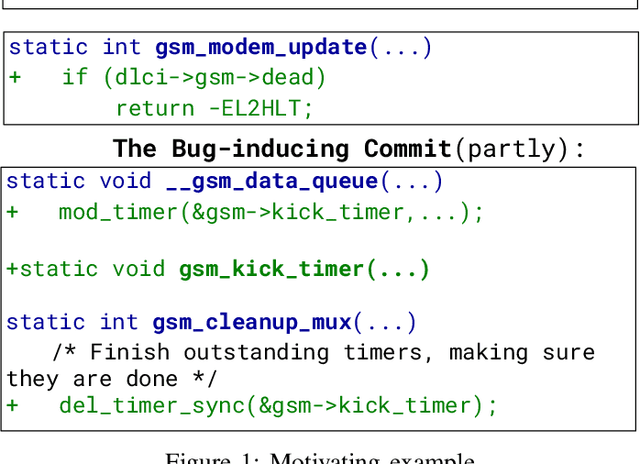
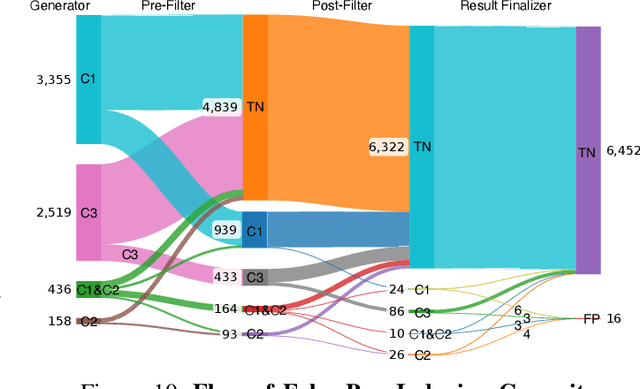
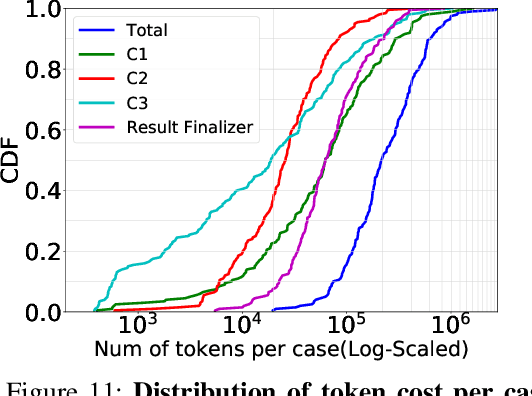
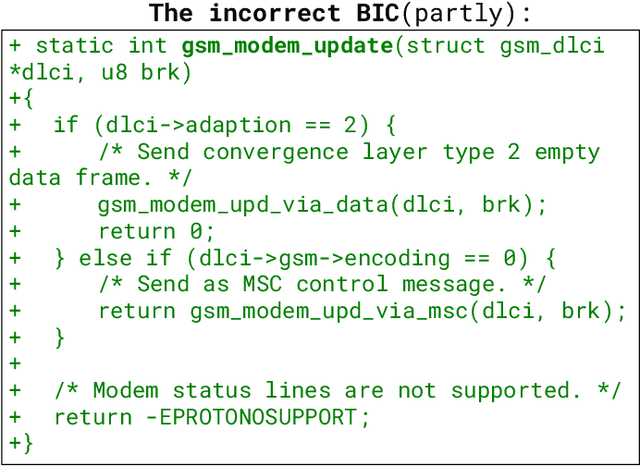
Abstract:Bug bisection has been an important security task that aims to understand the range of software versions impacted by a bug, i.e., identifying the commit that introduced the bug. However, traditional patch-based bisection methods are faced with several significant barriers: For example, they assume that the bug-inducing commit (BIC) and the patch commit modify the same functions, which is not always true. They often rely solely on code changes, while the commit message frequently contains a wealth of vulnerability-related information. They are also based on simple heuristics (e.g., assuming the BIC initializes lines deleted in the patch) and lack any logical analysis of the vulnerability. In this paper, we make the observation that Large Language Models (LLMs) are well-positioned to break the barriers of existing solutions, e.g., comprehend both textual data and code in patches and commits. Unlike previous BIC identification approaches, which yield poor results, we propose a comprehensive multi-stage pipeline that leverages LLMs to: (1) fully utilize patch information, (2) compare multiple candidate commits in context, and (3) progressively narrow down the candidates through a series of down-selection steps. In our evaluation, we demonstrate that our approach achieves significantly better accuracy than the state-of-the-art solution by more than 38\%. Our results further confirm that the comprehensive multi-stage pipeline is essential, as it improves accuracy by 60\% over a baseline LLM-based bisection method.
AI based signage classification for linguistic landscape studies
Oct 27, 2025Abstract:Linguistic Landscape (LL) research traditionally relies on manual photography and annotation of public signages to examine distribution of languages in urban space. While such methods yield valuable findings, the process is time-consuming and difficult for large study areas. This study explores the use of AI powered language detection method to automate LL analysis. Using Honolulu Chinatown as a case study, we constructed a georeferenced photo dataset of 1,449 images collected by researchers and applied AI for optical character recognition (OCR) and language classification. We also conducted manual validations for accuracy checking. This model achieved an overall accuracy of 79%. Five recurring types of mislabeling were identified, including distortion, reflection, degraded surface, graffiti, and hallucination. The analysis also reveals that the AI model treats all regions of an image equally, detecting peripheral or background texts that human interpreters typically ignore. Despite these limitations, the results demonstrate the potential of integrating AI-assisted workflows into LL research to reduce such time-consuming processes. However, due to all the limitations and mis-labels, we recognize that AI cannot be fully trusted during this process. This paper encourages a hybrid approach combining AI automation with human validation for a more reliable and efficient workflow.
Toward Medical Deepfake Detection: A Comprehensive Dataset and Novel Method
Sep 19, 2025Abstract:The rapid advancement of generative AI in medical imaging has introduced both significant opportunities and serious challenges, especially the risk that fake medical images could undermine healthcare systems. These synthetic images pose serious risks, such as diagnostic deception, financial fraud, and misinformation. However, research on medical forensics to counter these threats remains limited, and there is a critical lack of comprehensive datasets specifically tailored for this field. Additionally, existing media forensic methods, which are primarily designed for natural or facial images, are inadequate for capturing the distinct characteristics and subtle artifacts of AI-generated medical images. To tackle these challenges, we introduce \textbf{MedForensics}, a large-scale medical forensics dataset encompassing six medical modalities and twelve state-of-the-art medical generative models. We also propose \textbf{DSKI}, a novel \textbf{D}ual-\textbf{S}tage \textbf{K}nowledge \textbf{I}nfusing detector that constructs a vision-language feature space tailored for the detection of AI-generated medical images. DSKI comprises two core components: 1) a cross-domain fine-trace adapter (CDFA) for extracting subtle forgery clues from both spatial and noise domains during training, and 2) a medical forensic retrieval module (MFRM) that boosts detection accuracy through few-shot retrieval during testing. Experimental results demonstrate that DSKI significantly outperforms both existing methods and human experts, achieving superior accuracy across multiple medical modalities.
M-learner:A Flexible And Powerful Framework To Study Heterogeneous Treatment Effect In Mediation Model
May 23, 2025Abstract:We propose a novel method, termed the M-learner, for estimating heterogeneous indirect and total treatment effects and identifying relevant subgroups within a mediation framework. The procedure comprises four key steps. First, we compute individual-level conditional average indirect/total treatment effect Second, we construct a distance matrix based on pairwise differences. Third, we apply tSNE to project this matrix into a low-dimensional Euclidean space, followed by K-means clustering to identify subgroup structures. Finally, we calibrate and refine the clusters using a threshold-based procedure to determine the optimal configuration. To the best of our knowledge, this is the first approach specifically designed to capture treatment effect heterogeneity in the presence of mediation. Experimental results validate the robustness and effectiveness of the proposed framework. Application to the real-world Jobs II dataset highlights the broad adaptability and potential applicability of our method.Code is available at https: //anonymous.4open.science/r/M-learner-C4BB.
Verifying Robust Unlearning: Probing Residual Knowledge in Unlearned Models
Apr 21, 2025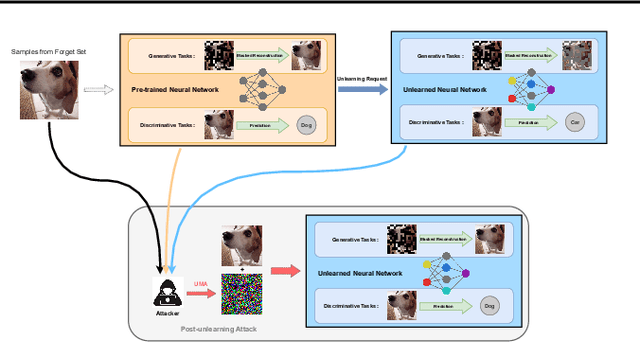
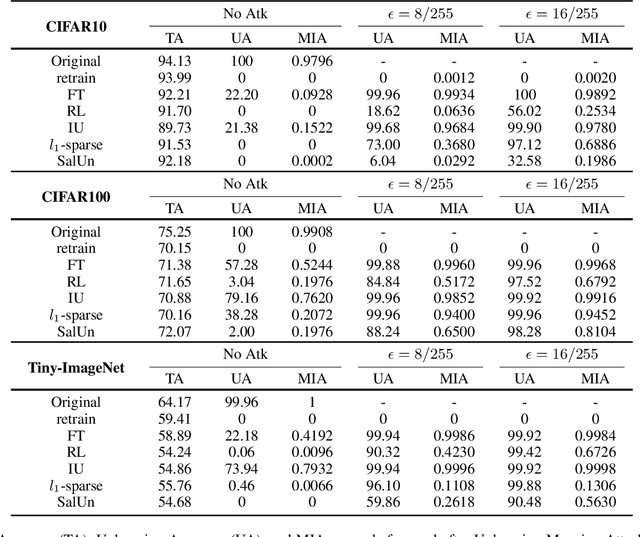


Abstract:Machine Unlearning (MUL) is crucial for privacy protection and content regulation, yet recent studies reveal that traces of forgotten information persist in unlearned models, enabling adversaries to resurface removed knowledge. Existing verification methods only confirm whether unlearning was executed, failing to detect such residual information leaks. To address this, we introduce the concept of Robust Unlearning, ensuring models are indistinguishable from retraining and resistant to adversarial recovery. To empirically evaluate whether unlearning techniques meet this security standard, we propose the Unlearning Mapping Attack (UMA), a post-unlearning verification framework that actively probes models for forgotten traces using adversarial queries. Extensive experiments on discriminative and generative tasks show that existing unlearning techniques remain vulnerable, even when passing existing verification metrics. By establishing UMA as a practical verification tool, this study sets a new standard for assessing and enhancing machine unlearning security.
Multimodal Coreference Resolution for Chinese Social Media Dialogues: Dataset and Benchmark Approach
Apr 19, 2025Abstract:Multimodal coreference resolution (MCR) aims to identify mentions referring to the same entity across different modalities, such as text and visuals, and is essential for understanding multimodal content. In the era of rapidly growing mutimodal content and social media, MCR is particularly crucial for interpreting user interactions and bridging text-visual references to improve communication and personalization. However, MCR research for real-world dialogues remains unexplored due to the lack of sufficient data resources.To address this gap, we introduce TikTalkCoref, the first Chinese multimodal coreference dataset for social media in real-world scenarios, derived from the popular Douyin short-video platform. This dataset pairs short videos with corresponding textual dialogues from user comments and includes manually annotated coreference clusters for both person mentions in the text and the coreferential person head regions in the corresponding video frames. We also present an effective benchmark approach for MCR, focusing on the celebrity domain, and conduct extensive experiments on our dataset, providing reliable benchmark results for this newly constructed dataset. We will release the TikTalkCoref dataset to facilitate future research on MCR for real-world social media dialogues.
 Add to Chrome
Add to Chrome Add to Firefox
Add to Firefox Add to Edge
Add to Edge